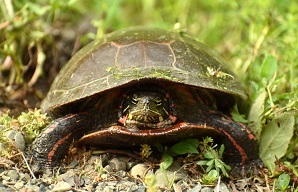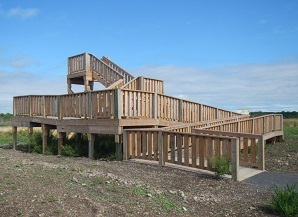Wildlife, Fish, and Marine Life Newsletter
The New York State Department of Environmental Conservation sent this bulletin on 05/09/2022 10:15 AM EDT |
| DEC Delivers - Information to keep you connected and informed from the NYS Department of Environmental Conservation |
| Share or view as a web page || Update preferences or unsubscribe |
Wildlife, Fish & Marine Life Newsletter |
Each May and June, Motorists Should be on the Alert for Turtles Crossing the Road
Our native turtles are on the move in May and June seeking sandy areas or loose soil to lay their eggs. In New York, thousands of turtles are killed each year when they are struck by vehicles as they migrate to their nesting areas. What you can do to help:
Photo of painted turtle by Liz Ricci. Tracking Timberdoodles
The American woodcock, or Timberdoodle, is a migratory upland bird, whose numbers have been declining for several decades. Since 2018, DEC has been a partner in the Eastern Woodcock Migration Research Cooperative, led by the University of Maine. The goal of the larger collaborative is to understand the woodcock’s migration ecology. During this study, 40 woodcock have been marked in New York and over 500 for the project overall. This year, DEC is expanding its efforts by partnering with SUNY Brockport and the University of Maine to better understand woodcock’s habitat usage during the spring breeding and summer brood rearing seasons. As part of the expanded effort, DEC biologists and technicians will be out trying to capture woodcock in early May. The information from this study will help guide habitat management on state and private lands in New York to benefit woodcock and other species that rely on early successional forest habitats. Check out a video about this interesting research. Photo by M. Noome DEC Releases Draft Access and Public Use Plan for Ashland Flats Wildlife Management Area
A draft Access and Public Use Plan (APUP) for Ashland Flats Wildlife Management Area (PDF) (WMA) is complete and available for public review and comment. Ashland Flats WMA contains 2,028 acres of primarily open meadows, secondary forest (re-grown forest), and young forests in Jefferson County east of Lake Ontario. The plan addresses management objectives for wildlife-dependent recreation, access features, and facility maintenance. The public is invited to provide comments on the draft APUP until June 1, 2022. Comments can be sent to DEC's Bureau of Wildlife, Region 6, 317 Washington Street, 7th Floor, Watertown, NY, 13601 or by email with the subject line "Ashland Flats WMA draft APUP." Photo: Accessible observation tower at Ashland Flats WMA. May is American Wetlands Month
New York State is home to over two million acres of freshwater wetlands. Freshwater wetlands are lands typically covered with water, are very wet, but are not connected to the ocean or estuary. Freshwater wetlands have many different names including bogs, swamps, marshes, vernal pools, potholes, and fens. Wetlands provide many benefits, including:
During American Wetlands Month, we encourage you to explore a local wetland or two. Warm, damp nights after a rain are perfect times to explore a wetland. Grab your rubber boots, rain jacket, and flashlight, and go out for an evening adventure! Photo of spring peeper by John Lehmann. |




